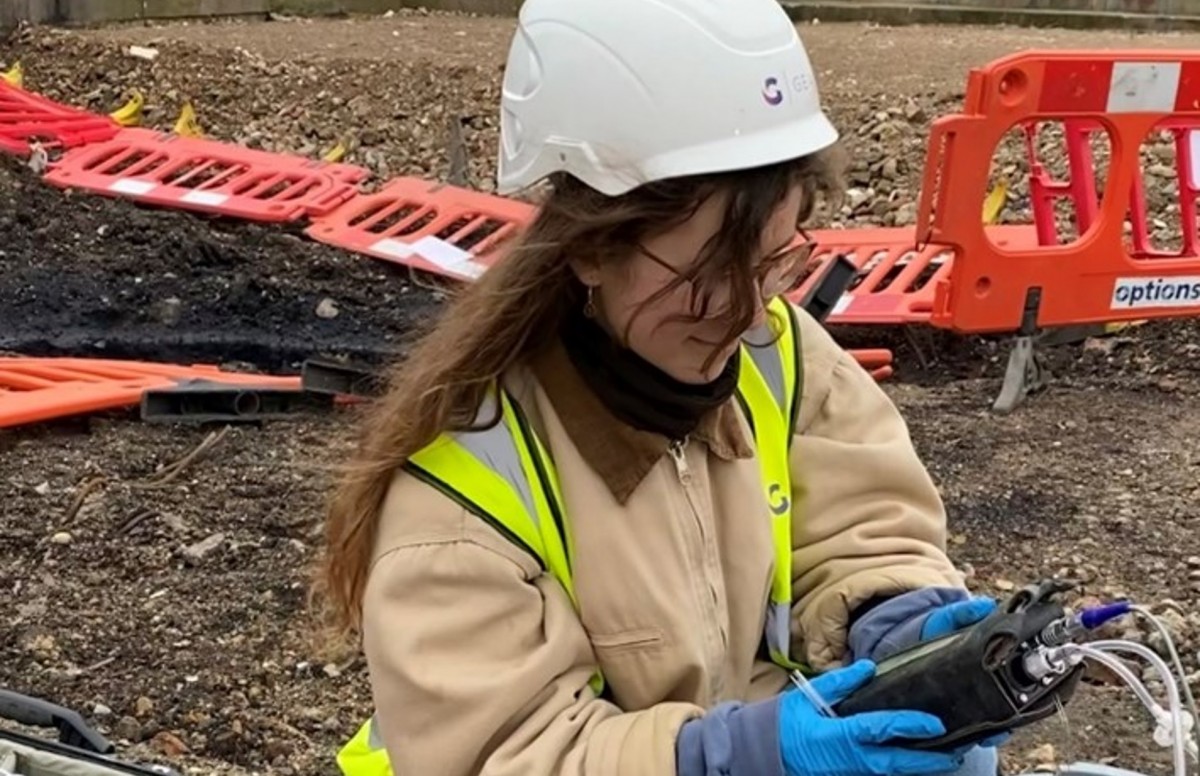The Greatest Guide To Geotheta
The Greatest Guide To Geotheta
Blog Article
Geotheta Can Be Fun For Everyone
Table of ContentsThe 25-Second Trick For GeothetaThe Main Principles Of Geotheta The smart Trick of Geotheta That Nobody is DiscussingThe Geotheta Diaries
They team up with civil engineers, structural designers, architects, and other professionals to incorporate geotechnical factors to consider right into the total task layout and building process. This calls for efficient teamwork, coordination, and communication to ensure that the geotechnical aspects align with the project objectives and meet governing demands.Mining & Products Engineering: Principles of boring, infiltration prices, and variables influencing the choice of boring technique. Blasting methods in surface area and underground workings. Mechanical and constant techniques to fragmentation, including longwall shearing and fullface boring.
Modelling of fragment and bit size circulations; comminution as a transfer feature. Comminution technology: squashing, grinding, dimension classification. Integrated evaluation of fragmentation and comminution procedures. Used by: Mining & Materials Engineering.
9 Simple Techniques For Geotheta
Bachelor's level programs in civil, geotechnical, geological, and environmental engineering commonly last 4 years and consist of general education and learning training courses in English, social scientific research, and the liberal arts, as well as courses in advanced mathematics, architectural geology, and liquid mineralogy. (https://www.anyflip.com/homepage/zuylo)
Geotechnical design includes the assessment of the dirt and rock problems at a certain website, and their effects for the advancement of that site. As many frameworks count on the ground for assistance, it lacks surprise that a detailed understanding of the ground conditions, and the suitability of foundation systems, are vital to the long-term security and performance of the structure or structure.
Specialising in the examination of geological developments and ground practices, geotechnical designers perform scientific investigations and testing to understand the influence these geological developments might carry the layout and construction of structure, civil and infrastructure jobs. This competence is critical for the style and building of structures, roads, passages, dams, bridges, and supply of water and sewer system.
The geotechnical group at Douglas Partners consistently seek advice from designers, layout engineers, developers, and contractors to make referrals on layout and advancement proposals to ensure that the built frameworks are accordingly created for the ground conditions. As an example, the design of footing systems requires to consider the weight of the framework, the ability of the ground to sustain that weight along with movement resistances and effective building.
A Biased View of Geotheta
This job is greatly simplified by the use of our Douglas Map geospatial platform which makes this information readily accessible in an easy to utilize web browser interface. A geotechnical designer will direct the drilling of boreholes and test pits to collect dirt and other examples, and likewise examine surface area attributes and ground exposures to form a geotechnical version of the subsurface conditions.
Relying on the project kind and ground conditions experienced, lab screening may to name a few points examine stamina, compressibility, reactivity and/or leaks in the structure of soil and rock examples. After this information is gathered and collected, the results are used for a geotechnical version of the website, which is commonly offered as sections throughout the site.

A geotechnical examination by nature can only examine the ground conditions at the locations drilled or dug deep into. All-natural variations in soil and rock problems can occur throughout a website and in between examination areas. It is consequently excellent practice that the geotechnical engineer be preserved throughout construction of the project to provide on-site confirmation that the ground conditions experienced follow the expectations and guidance supplied in the geotechnical examination record.
Not known Incorrect Statements About Geotheta
Geotechnical engineers use their comprehensive knowledge of soil and rock to evaluate threat and fix issues on diverse infrastructure projectsGeotechnical engineering is a specialist branch of civil engineering which takes a look at the behavior of earth products and the application of soil and rock technicians. Tailings Engineer. As a geotechnical engineer, you will certainly examine the physical, mechanical and chemical residential or commercial properties of dirt and rock in order to design structures, maintaining structures and earthworks
Geotechnical design is carefully connected to and overlaps with, both engineering geology and ground engineering - https://www.slideshare.net/ianhammond2191. It's possible to specialise in geotechnics or job for a geotechnical company however be understood as an engineering rock hound or a ground designer. As a geotechnical engineer, you'll require to: develop and preserve relationships with customers and other address specialists involved in the site, throughout each projectmaintain safety and security criteria on site bear in mind cost ramifications when you make recommendationsstudy geological maps and aerial photos from a variety of sources and from various time periodsexamine building and construction intends to see exactly how practical they are based on your understanding of the siteinvestigate risks or geological risks for the sitesearch for environmentally sensitive features, such as garbage dump start to develop accurate and expository ground modelsplan area investigationsdrill and analyse samples of bedrock, dirt, groundwater and extra materials manage various other experts on sitesolve technical concerns as they arise, such as unforeseen structures at drill sitesmonitor problems during and after construction to ensure frameworks are stable in the brief and lengthy termadding data gathered on website to your preliminary researchcreating geotechnical computations, drawings, and two or three-dimensional computer system models translating the datamaking suggestions about the suggested use of the site

Report this page